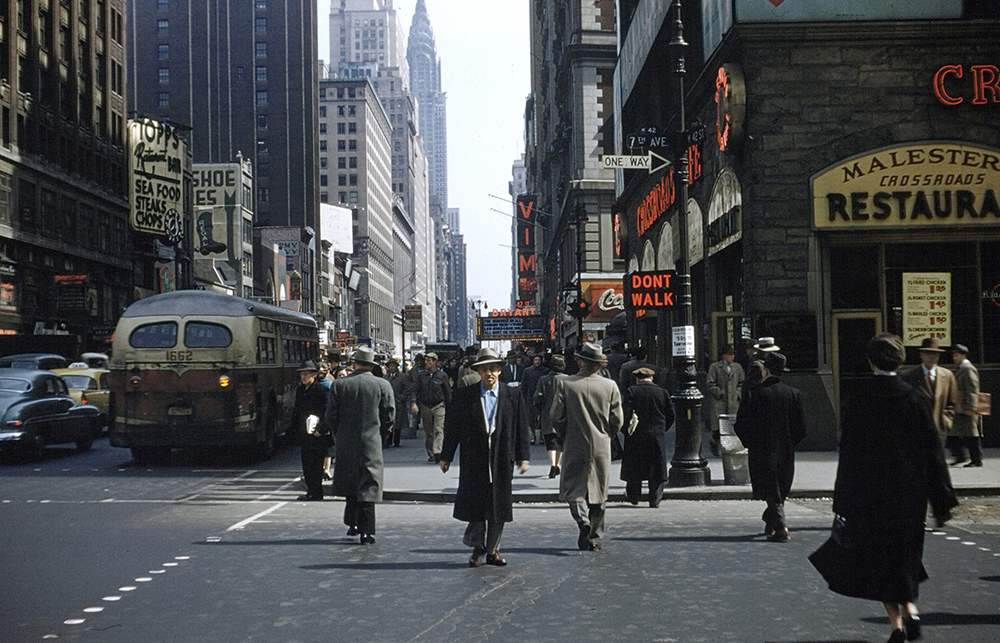美国将迎第四次城市技术革命,创新迫在眉睫

美国即将迎来第四次城市技术革命。铁路、电网和汽车定义了以前的时代,而如今在城市中整合新技术的发展策略将发挥惊人的潜力。
首先,美国的城市建筑可以显著地提高可持续性、适应性和经济性。其次,能源系统和基础设施可以实现“气候正效益”发展的承诺。此外,数字基础设施可以在安全保密的前提下促进人际交往和改善服务。美国还可以部署移动出行方案,实时调节人流和车流,缓解交通并减少碳排放。最后,创新的社会基础设施可以推出崭新的服务模式,建立真正包容的社区。
美国国会和政府目前正在协商一项和解方案,旨在使国家走上一条可持续及公平发展的道路。然而,这项使命的成功需要建立在深入投资技术解决方案的基础上,并承认城市和市县在诸多国家重点项目中的前线角色。
美国城市的建设、互联、供电、供暖和运作与过去75年基本相同。城市仍然普遍依赖于“愚蠢落后”的基础设施,比如传统的交通信号灯只能指挥交通,几乎没有其他作用。
上世纪20年代,底特律设置了第一个红黄绿自动交通信号灯,它开创了最先进的交通管理技术。很快,美国的每个主要十字路口都装上了红绿灯,它从那时起就一直是城市技术的标志。对于美国的城市来说,依靠100年前的技术并不罕见。如果你仔细观察该国的任何一座城市,会发现这种情况相当普遍。虽然国家的政策需求和技术能力发生了巨大变化,但美国城市所依赖的体系自二战以来基本处在停滞状态。
美国意识到必须利用今天的技术,利用人工智能、机器学习、数据分析、互联基础设施、云计算和自动化去运作城市。这也是他们为什么会协力形成一个新倡议——城市创新联盟,以重新构想未来的城市基础设施。该联盟由领先的城市思想家、企业和非营利组织组成,呼吁国会和政府抓住这一代人的机会,释放城市的潜力,以此强力应对气候变化、促进包容和解决最棘手的挑战。
城市渴望创新,但需要联邦政府的支持和投资来实现这一点。2015年,美国交通部发起了联邦智能城市挑战赛,吸引了78座城市提出资助申请。这些扶助措施包括用智能LED灯取代传统路灯以减少能源消耗,监测空气质量,以及建立通畅的货运优先通道和信号,缓解交通并减少排放。
俄亥俄州的哥伦布市最终赢下了这项比赛,他们得以建设一个开源的交通数据中心,还在一个居民区率先推出第一辆自动驾驶公共穿梭班车,并试点互联车辆技术以提高安全性。但从那以后,城市的发展一直缺乏联邦领导,因此无法系统地进行现代化,也面临资金不足的窘境。
美国国会目前的基础设施提案可圈可点,其中包括实施拥挤收费策略。和解法案如果能实际投入资金帮助城市创新,可能会产生更大的影响。城市创新联盟最近致信国会领导人,提出了几项推动城市创新的具体策略,他们早该如此。
考虑到75%的排放来自城市,联邦政府行动若推动城市绿色技术研究,可能会收到巨大的回报。联邦政府对美国太阳能产业的推动有目共睹,他们也需要在促进城市气候技术开发方面发挥领导作用,从而打造系统去优化多式联运、减少与建筑相关的排放,并加速向电气化过渡。这也是为什么联盟敦促国会将“城市创新”作为交通和能源部门高级研究的优先事项。
面对一些足以改变世界的想法和方法,城市社区在孵化、测试、展示和领导等方面的能力与一个世纪之前保持一致。美国如果不支持城市创新,将无法实现其最重要的目标。国会和政府是时候抓住面前的机会,投资建设更强大的城市社区,让它们比以往任何时候都更公平和可持续。(财富中文网)
理查德·佛罗里达是加拿大多伦多大学的教授,也是媒体公司 CityLab的联合创始人,此外还著有《创意阶层的崛起》和新书《新城市危机》。丹尼尔·L·多克托罗夫是城市创新公司 Sidewalk Labs的首席执行官,该公司归谷歌母公司Alphabet所有。
译者:秦维奇
美国即将迎来第四次城市技术革命。铁路、电网和汽车定义了以前的时代,而如今在城市中整合新技术的发展策略将发挥惊人的潜力。
首先,美国的城市建筑可以显著地提高可持续性、适应性和经济性。其次,能源系统和基础设施可以实现“气候正效益”发展的承诺。此外,数字基础设施可以在安全保密的前提下促进人际交往和改善服务。美国还可以部署移动出行方案,实时调节人流和车流,缓解交通并减少碳排放。最后,创新的社会基础设施可以推出崭新的服务模式,建立真正包容的社区。
美国国会和政府目前正在协商一项和解方案,旨在使国家走上一条可持续及公平发展的道路。然而,这项使命的成功需要建立在深入投资技术解决方案的基础上,并承认城市和市县在诸多国家重点项目中的前线角色。
美国城市的建设、互联、供电、供暖和运作与过去75年基本相同。城市仍然普遍依赖于“愚蠢落后”的基础设施,比如传统的交通信号灯只能指挥交通,几乎没有其他作用。
上世纪20年代,底特律设置了第一个红黄绿自动交通信号灯,它开创了最先进的交通管理技术。很快,美国的每个主要十字路口都装上了红绿灯,它从那时起就一直是城市技术的标志。对于美国的城市来说,依靠100年前的技术并不罕见。如果你仔细观察该国的任何一座城市,会发现这种情况相当普遍。虽然国家的政策需求和技术能力发生了巨大变化,但美国城市所依赖的体系自二战以来基本处在停滞状态。
美国意识到必须利用今天的技术,利用人工智能、机器学习、数据分析、互联基础设施、云计算和自动化去运作城市。这也是他们为什么会协力形成一个新倡议——城市创新联盟,以重新构想未来的城市基础设施。该联盟由领先的城市思想家、企业和非营利组织组成,呼吁国会和政府抓住这一代人的机会,释放城市的潜力,以此强力应对气候变化、促进包容和解决最棘手的挑战。
城市渴望创新,但需要联邦政府的支持和投资来实现这一点。2015年,美国交通部发起了联邦智能城市挑战赛,吸引了78座城市提出资助申请。这些扶助措施包括用智能LED灯取代传统路灯以减少能源消耗,监测空气质量,以及建立通畅的货运优先通道和信号,缓解交通并减少排放。
俄亥俄州的哥伦布市最终赢下了这项比赛,他们得以建设一个开源的交通数据中心,还在一个居民区率先推出第一辆自动驾驶公共穿梭班车,并试点互联车辆技术以提高安全性。但从那以后,城市的发展一直缺乏联邦领导,因此无法系统地进行现代化,也面临资金不足的窘境。
美国国会目前的基础设施提案可圈可点,其中包括实施拥挤收费策略。和解法案如果能实际投入资金帮助城市创新,可能会产生更大的影响。城市创新联盟最近致信国会领导人,提出了几项推动城市创新的具体策略,他们早该如此。
考虑到75%的排放来自城市,联邦政府行动若推动城市绿色技术研究,可能会收到巨大的回报。联邦政府对美国太阳能产业的推动有目共睹,他们也需要在促进城市气候技术开发方面发挥领导作用,从而打造系统去优化多式联运、减少与建筑相关的排放,并加速向电气化过渡。这也是为什么联盟敦促国会将“城市创新”作为交通和能源部门高级研究的优先事项。
面对一些足以改变世界的想法和方法,城市社区在孵化、测试、展示和领导等方面的能力与一个世纪之前保持一致。美国如果不支持城市创新,将无法实现其最重要的目标。国会和政府是时候抓住面前的机会,投资建设更强大的城市社区,让它们比以往任何时候都更公平和可持续。(财富中文网)
理查德·佛罗里达是加拿大多伦多大学的教授,也是媒体公司 CityLab的联合创始人,此外还著有《创意阶层的崛起》和新书《新城市危机》。丹尼尔·L·多克托罗夫是城市创新公司 Sidewalk Labs的首席执行官,该公司归谷歌母公司Alphabet所有。
译者:秦维奇
The U.S. is on the verge of the fourth revolution in urban technology. Where railroads, the electric grid, and the automobile defined previous eras, today, new strategies that integrate new technologies in our cities can unlock striking possibilities.
Our buildings can be dramatically more sustainable, adaptable, and affordable. Energy systems and physical infrastructure can fulfill the promise of “climate-positive” development. Secure digital infrastructure can connect people and improve services while safeguarding privacy. We can deploy mobility solutions that regulate the flow of people and vehicles in real time, ease traffic, and cut carbon emissions. Innovative social infrastructure can enable new service models to build truly inclusive communities.
Congress and the administration are currently negotiating a reconciliation package that is intended to put the U.S. on a path to a sustainable and equitable future. However, this mission will not succeed without meaningful investments in technical solutions that recognize the frontline role of cities and urban counties in so many national priorities.
U.S. cities are still built, connected, powered, heated, and run much as they have been for the past 75 years. Cities continue to generally rely on “dumb” infrastructure, such as the classic traffic light, which can direct traffic and do little else.
When Detroit deployed the first red-yellow-green automatic traffic light in the 1920s, it pioneered state-of-the art traffic management. Soon, there was a traffic light at every major intersection in America, and it has remained an icon of urban technology ever since. Relying on 100-year-old technology isn’t all that unusual in our cities. If you look closely at any American city, you will see it’s rather the rule. While our policy needs and technical capabilities have changed dramatically, the urban systems U.S. cities rely on have remained essentially frozen in time since the Second World War.
We must leverage today’s technology and use artificial intelligence, machine learning, data analytics, connected infrastructure, cloud computing, and automation to run our cities. That is why we have come together to help forge a new initiative, the Coalition for Urban Innovation, to reimagine urban infrastructure for the future. Consisting of leading urban thinkers, businesses, and nonprofits, the coalition is calling on Congress and the administration to seize this generational opportunity to finally unlock the potential of cities as powerful levers for tackling climate change, promoting inclusion, and otherwise addressing our thorniest challenges.
Cities are hungry to innovate, but they need federal support and funding to help them do it. When the Department of Transportation launched the federal Smart City Challenge competition in 2015, it attracted funding proposals from 78 applicants. These ranged from replacing traditional streetlights with smart LEDs to slash energy usage while monitoring air quality, to building connected freight priority lanes and signals to ease traffic and cut emissions.
Columbus, Ohio, won, going on to build an open-source transit data hub, pioneer the first self-driving public shuttle in a residential neighborhood, and pilot connected vehicle technology to improve safety. Since then, federal leadership has been lacking, leaving efforts to modernize urban systems incomplete and poorly funded.
Congress’s current infrastructure proposal features commendable items, such as investing in congestion pricing strategies. The impact of the reconciliation bill could be even greater, but only if it commits real dollars to help our cities innovate. The coalition recently wrote to congressional leaders offering several specific (and long overdue) strategies for turbocharging urban innovation.
With 75% of emissions arising from cities, federal action promoting research into urban green technologies could pay outsize dividends. Just as the federal government advanced the U.S. solar industry, federal leadership is needed to foster urban climate technologies, such as systems that optimize multimodal transportation, reduce emissions associated with buildings, and accelerate the transition to electrification. That’s why the coalition has urged Congress to add “urban innovation” as a priority for advanced research at the Departments of Transportation and Energy.
The capacity of urban communities to incubate, test, showcase, and lead with world-changing ideas and approaches is as true today as it was a century ago. Without support for urban innovation, the U.S. will fall well short of its most important goals. It’s time for Congress and the administration to seize the opportunity before them and deliver investments to build America’s urban communities back stronger, making them more equitable and more sustainable than ever.
Richard Florida is a professor at the University of Toronto and cofounder of CityLab. He is the author of The Rise of the Creative Class and most recently, The New Urban Crisis. Daniel L. Doctoroff is the chief executive of Sidewalk Labs, an urban-innovation company owned by Google parent Alphabet.













